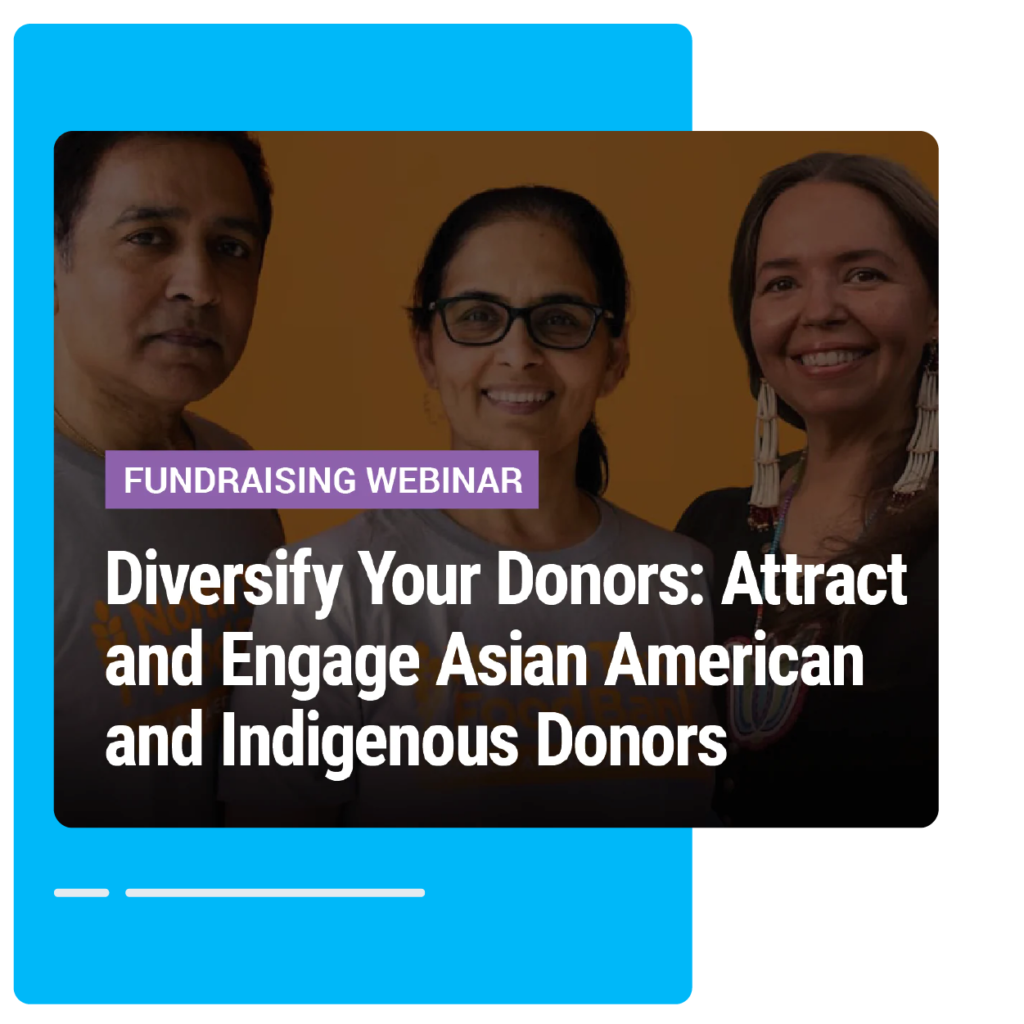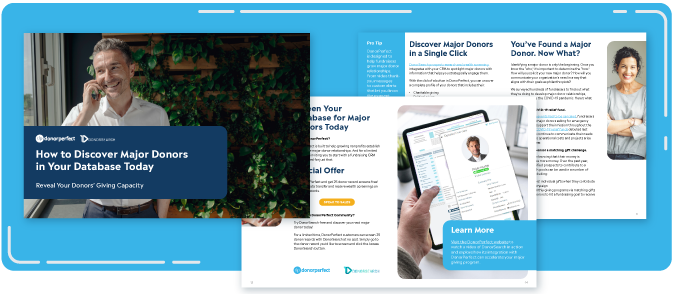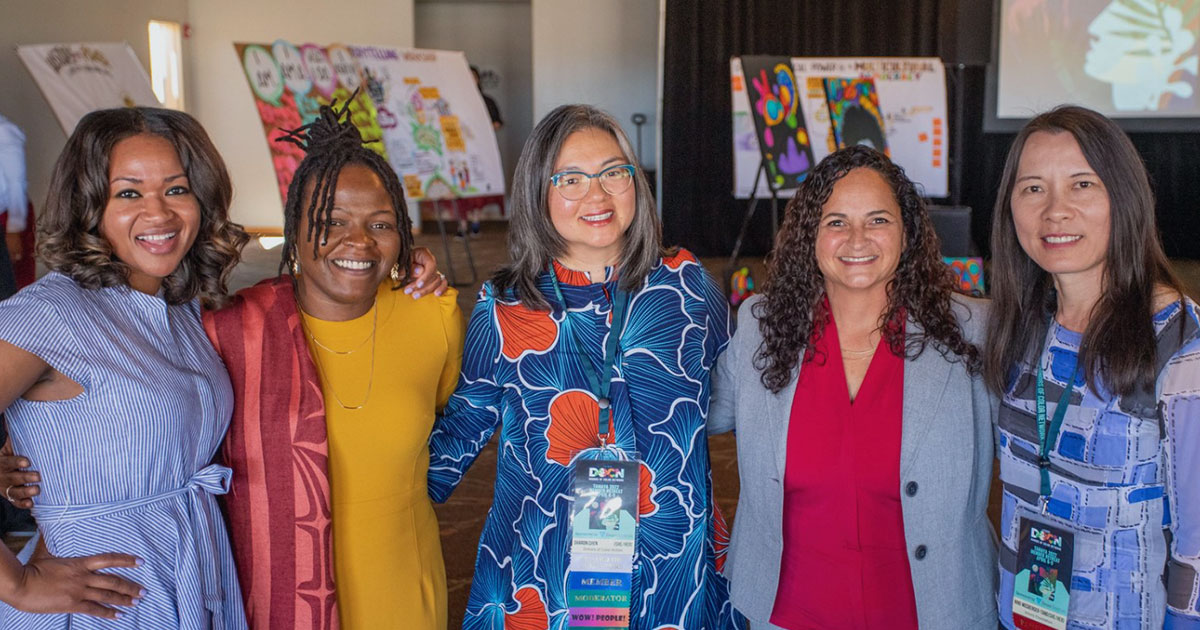There are plenty of reasons why nonprofit organizations approach major donors with caution – specifically high net worth individuals (HNWI), or even billionaires like Bill Gates. While it is true that spending time and energy on these monumental gifts can give pause to newer and smaller nonprofits, it isn’t as scary as fundraisers once thought.
Dispelling beliefs about high net-worth donors
The skewing of fundraising results
When people like Mackenzie Scott or the Gates family give massive gifts, especially during a worldwide fundraising event like GivingTuesday that reaches 80 million people, it can become difficult for fundraisers to measure year-over-year progress and forecast their predictions for the future.
If you need to filter out donations that exceed a certain amount in order to look at metrics like average gift size, you can certainly do so! A nonprofit-specific system like DonorPerfect allows fundraisers to customize, filter, and automate their own reports for a better understanding of murky or skewed data. A robust reporting platform allows nonprofits to grow their constituency by tracking donor retention so that if they benefit from a major gift one year, but not the next, it isn’t the end of the world.
The case for international donor engagement
Does your mission serve a global need? Tapping into affluent communities with an affinity for your cause isn’t limited to your nonprofit’s city, state, or even country. Online fundraising has made it cost-effective to process donations from just about anyone, anywhere.
And since the cost of raising major gifts globally is modest, there really is no reason for organizations with an existing international constituency, a global programmatic reach, or even just Facebook and Twitter accounts to ignore this market.
Engaging with ex-pat groups can be effective, too. Anna and Raj Asava, Texas philanthropists from India, co-founded HungerMitao (Wipe Out Hunger), channeling contributions from Indian Americans to Feeding America’s network of food banks around the country. Learn more from their Chronicle of Philanthropy webinar.

The concern with HNWI relationships
Some nonprofit organizations may have concerns about the relationship that could develop between their mission and their major donors. For example, if a donor with a high net worth is able to fund a new building, and request that it be named in their honor, is the donation altruistic? Furthermore, will your stakeholders inevitably become beholden to the donor’s wishes in the future, even if it may not align with your mission?
The reality is that these public displays of good are at the very end of a process. Cultivation of relationships with individuals who make large contributions usually begins long before they have amassed their fortunes.
The impact of public opinion
Hearing about support from HNWI donors doesn’t necessarily deter smaller donors. These large contributions can make a program or an initiative more “real” to the broader community, and therefore more likely to gain community support. They put your organization on the map. For example, the opening of a new building may be featured in a local publication, making readers think and talk about getting involved.
On the other hand, the absence of these major contributions could suggest a lack of support among community leaders, even if that’s not the case.
Guiding high-net-worth donor engagement
Know that wealth doesn’t equal experience
Business acumen does not always translate directly to other fields. The analyses used to assess a good financial investment are not the same for a good charitable investment. All that to say, wealthy donors are not experts at making major gifts. At best, they might consider projects, scrutinize organizations and budgets, interview organizational leadership, and compare notes with peers.
Inspire a sense of trust and familiarity
Their lack of experience may explain why major donors typically rely on some level of familiarity and trust when making the decision to make a major gift. That comes with relationships built over time.
Since time is limited and trust takes time to build, they might consider taking matters into their own hands, simply because they haven’t yet had the opportunity to meet the organizations which are the best fit for them. They are often innocently unaware that some organization is already doing the same work without sufficient financial support.
Concentrate on cause vs. organization
If engaging these individuals still sounds daunting, don’t worry, you don’t have to do this alone. Consider forming a coalition with organizations similar to yours, or engaging your community in a common goal. HNWI donors are likely to respond to a need when people or nonprofits come together to address a problem too large for any to deal with individually – the cause has to be something big enough to capture the imagination of big thinkers and warrant significant investments.
For example, the Donors of Color Network (DOCN) released a study showing that HNWI donors of color reported a combined total of $56 million in annual giving. The DOCN is the first-ever cross-racial community of donors of color committed to driving systemic change and advancing racial equity.
“[These donors] represent a transformational force in social change philanthropy. Their life experience, vision, and leadership are vital in a historical moment in which the salience of race and racism to every institution and system in U.S. society is glaringly evident, and in which new ideas and solutions are urgently needed.”
– Philanthropy Always Sounds Like Someone Else: A Portrait of High Net Wealth Donors of Color
Embrace the abundance mentality
You’ve probably heard talk of having an abundance mentality vs. a scarcity mentality, especially in fundraising. Forbes describes the scarcity mentality as “people seeing life as a finite pie, so that if one person takes a big piece, that leaves less for everyone else.” This short-term way of thinking is common in the corporate world where promotions are scarce, resources are slim, and information is kept secret.
When engaging with HNWI, focus on your accolades and what you’ve been able to accomplish with the donors you already have, rather than the areas of your organization that need support. Show genuine gratitude for the support you’ve received thus far.
This may sound counterintuitive, but it will get them thinking about the many opportunities for growth that would become possible with their involvement – so it’s their idea, not yours. Engaging in an abundance-minded conversation makes both parties feel good about what lies ahead, rather than disappointed about what’s lacking.
In major gift fundraising, getting started is often the hardest part. For help finding wealthy donors who are in your area or interested in your cause, you can lean on prospect research tools that pull from public records. Once you’ve found them and you’re ready to start engaging, look to fundraising resources that speak to your organization’s size and capacity. For example, DonorPerfect specializes in helping small and mid-size nonprofits succeed, offering free guides such as How to Discover Major Donors in Your Database Today – available for download below!







